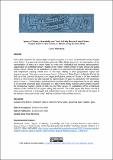Files in this item
Spaces of mystery, knowledge and truth in early Russian crime fiction : Semyon Panov's Three Courts, or Murder during the Ball (1876)
Item metadata
| dc.contributor.author | Whitehead, Claire Eugenie | |
| dc.date.accessioned | 2020-01-07T09:30:03Z | |
| dc.date.available | 2020-01-07T09:30:03Z | |
| dc.date.issued | 2019-12-31 | |
| dc.identifier | 261013057 | |
| dc.identifier | 3dbfed5c-7013-4a91-b472-1022428defb7 | |
| dc.identifier | 85120343034 | |
| dc.identifier.citation | Whitehead , C E 2019 , ' Spaces of mystery, knowledge and truth in early Russian crime fiction : Semyon Panov's Three Courts, or Murder during the Ball (1876) ' , Victorian Popular Fictions , vol. 1 , no. 2 , pp. 110-122 . < https://victorianpopularfiction.org/publications/1200-2/victorian-popular-fictions-volume-1-issue-2-autumn-2019/victorian-popular-fictions-journal-1-2-article-8/ > | en |
| dc.identifier.issn | 2632-4253 | |
| dc.identifier.other | ORCID: /0000-0003-3712-2223/work/67167078 | |
| dc.identifier.uri | https://hdl.handle.net/10023/19237 | |
| dc.description.abstract | This article examines the representation of space and place in a work of nineteenth-century Russian crime fiction. It argues that crime fiction generally offers fertile ground for an interrogation of the representation of space as a means better to understand ideological and aesthetic preoccupations. Appreciation of nineteenth-century Russian crime fiction remains limited in both critical and public circles, and so a focus on the exploitation of space in a work from this particular national tradition will complement existing critical work on this topic relating to other geographical regions and historical periods. This article uses Semyon Panov’s 1876 novel, Three Courts, or Murder During the Ball, as its test case both because it is archetypical of generic practice in Russia in the late nineteenth century to some extent, but also because its representation of space is particularly well-developed. Space in Panov’s Three Courts is examined from a number of different angles here: its use of a setting in an unnamed provincial town; its location in a labyrinthine family mansion which gestures towards the locked-door mystery typical of both this and other genres; its exploitation of the architectural features of the corridor and of a glass ceiling and windows. The article argues that Panov uses all of these spatial elements to interrogate and problematise issues related to the authority of the figure of the detective, the access to the “truth” and the resolution of the criminal mystery. | |
| dc.format.extent | 469794 | |
| dc.language.iso | eng | |
| dc.relation.ispartof | Victorian Popular Fictions | en |
| dc.subject | Russian crime fiction | en |
| dc.subject | Nineteenth century | en |
| dc.subject | Semyon Panov | en |
| dc.subject | Space | en |
| dc.subject | Provincial town | en |
| dc.subject | Corridor | en |
| dc.subject | Glass | en |
| dc.subject | PN Literature (General) | en |
| dc.subject | T-NDAS | en |
| dc.subject | SDG 16 - Peace, Justice and Strong Institutions | en |
| dc.subject.lcc | PN | en |
| dc.title | Spaces of mystery, knowledge and truth in early Russian crime fiction : Semyon Panov's Three Courts, or Murder during the Ball (1876) | en |
| dc.type | Journal article | en |
| dc.contributor.institution | University of St Andrews. School of Modern Languages | en |
| dc.contributor.institution | University of St Andrews. Russian | en |
| dc.description.status | Peer reviewed | en |
| dc.identifier.url | https://victorianpopularfiction.org/publications/1200-2/victorian-popular-fictions-volume-1-issue-2-autumn-2019/victorian-popular-fictions-journal-1-2-article-8/ | en |
This item appears in the following Collection(s)
Items in the St Andrews Research Repository are protected by copyright, with all rights reserved, unless otherwise indicated.

